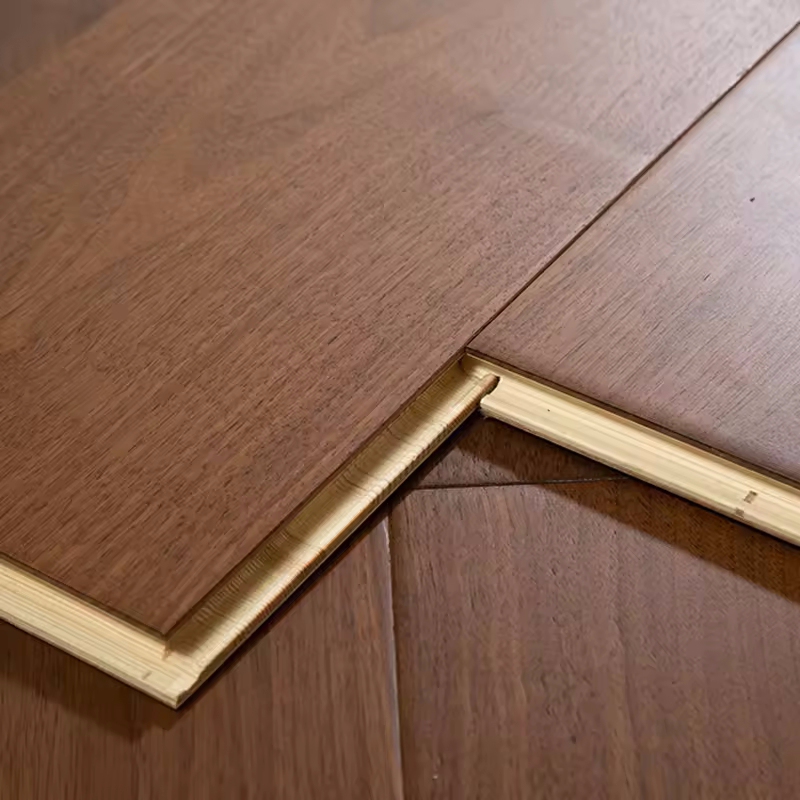Luxury Laminate Plank Flooring
The luxury Laminate Plank flooring seamlessly integrates beauty, durability, and low maintenance, rendering it an ideal selection for any residence. Its refined golden hue and lifelike oak wood grain impart a timeless elegance to both traditional and contemporary spaces. With rich wood grain patterns and rustic details, this composite wood flooring creates a warm and inviting ambiance. It offers easy installation and upkeep, presenting a practical yet stylish flooring solution for every room in your home. Simply maintain its allure by regular vacuuming and wiping with a damp cloth.
Luxury laminate plank flooring has emerged as a popular alternative to traditional hardwood and engineered wood flooring. Combining aesthetic appeal with engineered durability, it meets the modern homeowner’s demand for cost-efficiency, longevity, and style. This article explores the technical details, materials, standards, and regulatory factors behind luxury laminate plank flooring, helping architects, designers, and consumers make informed decisions.
What Is Luxury Laminate Plank Flooring?
Luxury laminate plank flooring is a multi-layer synthetic product designed to replicate the appearance of hardwood, stone, or tile. Unlike standard laminates, luxury variants offer enhanced wear layers, deeper embossing, and superior core stability. It consists of four key layers:
Wear Layer: Transparent protective coating that resists scratches and stains.
Decorative Layer: High-definition photographic image simulating real wood or stone.
Core Layer: High-density fiberboard (HDF) or medium-density fiberboard (MDF) that offers stability and moisture resistance.
Backing Layer: Provides balance and additional moisture protection.
Engineering Principles Behind Laminate Plank Flooring
From an engineering perspective, the design of laminate plank flooring follows structural load distribution principles and thermodynamic behavior under fluctuating room conditions.
Load Resistance: HDF core density usually ranges between 850–950 kg/m³, ensuring it can withstand 150–200 kg per square meter of static load.
Thermal Expansion: Engineered with expansion gaps of 10–12 mm around room edges to counteract dimensional shifts.
Acoustic Performance: Acoustic underlayment options can reduce sound transmission by up to 18–20 dB, meeting ISO 10140 requirements.
Key Advantages
Cost-Effective Luxury: Offers the appearance of hardwood at 30–50% of the cost.
Durability: Abrasion Class (AC) ratings from AC3 to AC5 ensure suitability for residential and commercial use.
Low Maintenance: Requires minimal cleaning and does not need refinishing.
Eco-Friendly Options: Available in E0 or E1 formaldehyde emission grades, conforming to EN 717-1 standards.
Materials & Industry Standards
Core Material: Typically HDF with >850 kg/m³ density, bonded with melamine resin.
Surface Coating: Aluminum oxide for scratch resistance (minimum 50g/m²).
Dimensions: Standard plank size ranges from 1215 x 195 mm to 1380 x 200 mm.
Thickness: Common thicknesses are 8 mm, 10 mm, and 12 mm.
Fire Ratings: Must comply with ASTM E648 Class I or EN 13501-1 Bfl-s1 for flame spread and smoke production.
Regulatory Considerations
Formaldehyde Emission: Must meet regional environmental health standards such as:
CARB Phase 2 (≤0.05 ppm)
EU E1 (≤0.1 ppm)
Slip Resistance: Required coefficient of friction >0.5 per ANSI A137.1 or DIN 51130 R9 minimum for residential use.
Moisture Resistance: ISO 24336 used to test swelling after immersion; ≤18% swell recommended for high-durability products.
Installation and Operational Notes
Subfloor Requirements: Must be clean, level (≤3 mm deviation over 2 meters), and dry (≤5% moisture).
Acclimation Period: 48 hours in the room where installation occurs.
Expansion Gaps: Required at walls and immovable structures (10–12 mm).
Maintenance: Clean with non-abrasive damp cloths; avoid steam cleaners unless rated safe.
Use Cases and Examples
High-End Residential Projects: Often used in luxury apartments for its balance of style and price.
Commercial Spaces: AC4/AC5-rated products serve well in retail stores and office buildings.
Hospitality Industry: Combines durability and acoustic comfort, making it suitable for hotels and restaurants.
Frequently Asked Questions (FAQs)
Q1: Is luxury laminate waterproof?
A: Standard laminate is water-resistant, not waterproof. However, certain sealed-edge products with waxed locking systems can withstand spills for up to 72 hours.
Q2: Can it be used with underfloor heating?
A: Yes, most products allow compatibility up to 28°C. Always verify with the manufacturer’s technical datasheet.
Q3: How long does it last?
A: With proper maintenance, luxury laminate can last 15–25 years, depending on the wear layer and traffic levels.
Q4: Is there any warranty?
A: Most manufacturers offer 10–30 year warranties based on residential or commercial use.
Conclusion and Professional Recommendation
Luxury laminate plank flooring offers a high-performance, visually appealing solution for both residential and commercial interiors. When selecting products, ensure compliance with local regulations, assess core material density, and choose the appropriate AC rating for your project type.
We recommend consulting installation professionals and verifying third-party certifications before procurement.
Call to Action
For project planners, interior designers, and facility managers: Invest in premium-grade luxury laminate plank flooring that aligns with EN, ASTM, and ISO standards. Evaluate suppliers who offer test certifications and technical documentation to ensure quality, safety, and compliance.
Submitted successfully
We will contact you as soon as possible

















